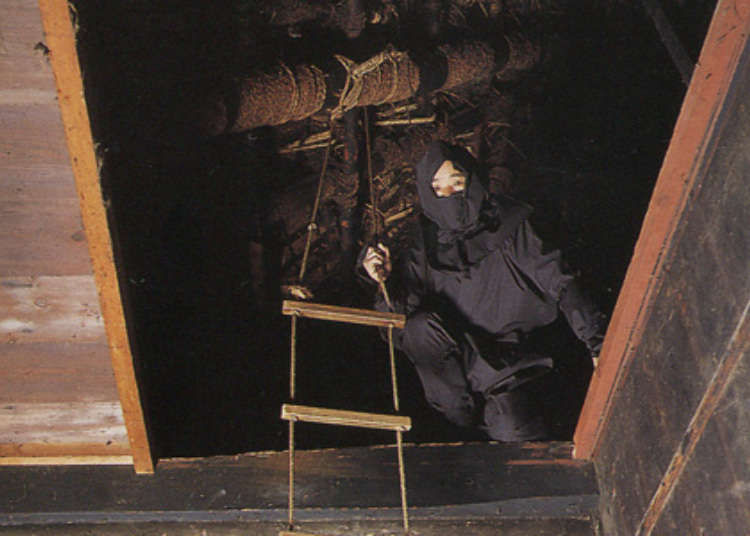
Koka Ninja House: Become A Ninja At Japan's Only Remaining Ninja Residence!
- Written by: WESTPLAN
Koka Ninja House, located in Koka City, Shiga Prefecture, is Japan’s only remaining “ninja house” where actual ninja lived. It is commonly believed that there were once 49 ninja schools in Japan. The two major powers among them were the Koka and the Iga schools.
At Koka Ninja House, visitors can experience an authentic residence that real ninja actually used, look at shuriken and other tools, and learn the history of the ninja. So let's travel back in time to discover the secrets of these mysterious figures.
- Table of Contents
-
- Koka - Japan's ninja village
- Koka Ninja House: Where the signs of a real ninja remain
- Experience karakuri everywhere!
- After all that escaping, I need a break... So, what is ninja tea?
- The ninja history room
- Dress up as a ninja and use shuriken
- 5 Recommended Souvenirs at Koka Ninja House
- Other Koka Ninja Locations
Koka - Japan's ninja village
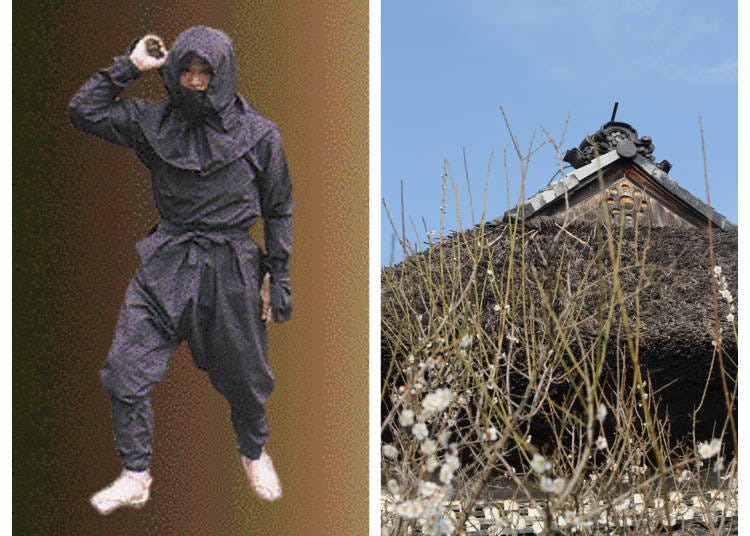
The two great ninja villages were Iga and Koka, with the latter’s headquarters located in a mountainous area adjacent to Shiga and Mie prefectures.
The existence of the Koka ninja became known throughout the country in 1487 during the Battle of Magari as they helped the Sasaki Rokkaku clan defy the Muromachi Shogunate by launching surprise attacks in the mountains and burning the enemy headquarters.
During this period of chaos and continuous warfare, ninja were employed as spies, using their special skills and tactics. In feudal Japan, just as in modern times, the one who controls the information wins, and ninja played an active role from the shadows, with a history enshrouded in mystery.
Despite that secretive history, Koka City and the Koka Ninja House still hold notoriety as the former home of the ninja.
Koka Ninja House: Where the signs of a real ninja remain
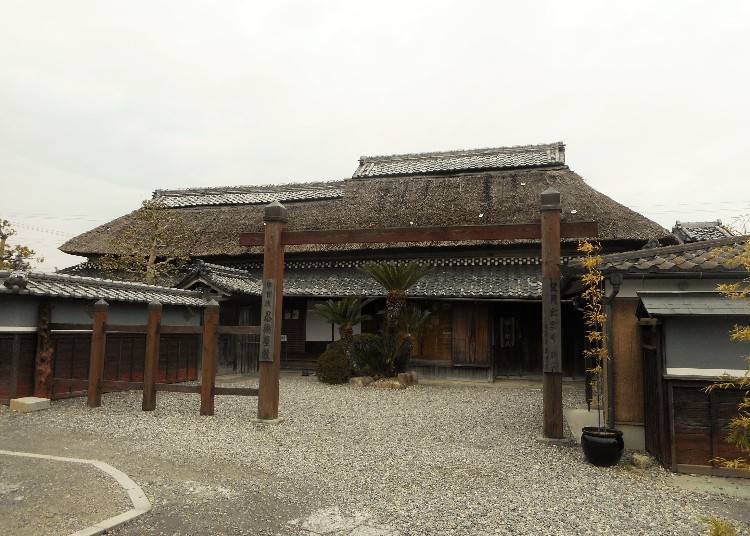
The Koka Ninja House in Koka City, Shiga Prefecture, was built about 300 years ago as the home of the Mochizuki family – the leaders of the 53 Koka families. Despite the roof of the house being visible, the main gate isn’t so easy to find, which is a calculated measure of protection against enemies.
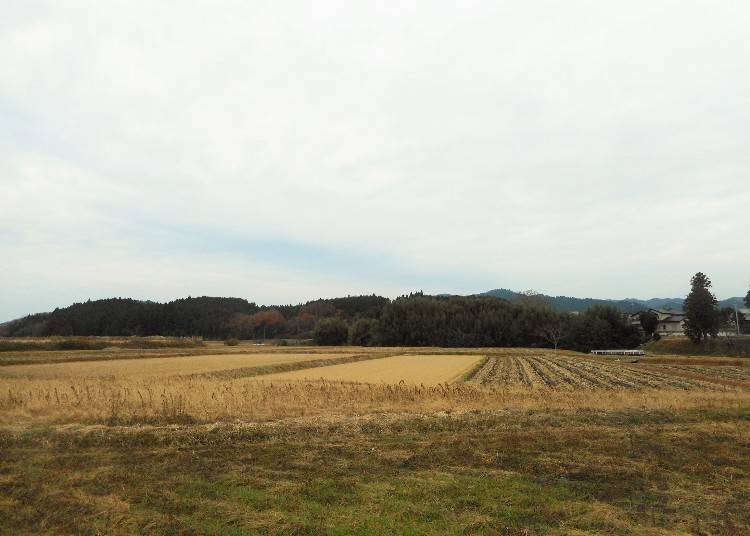
Surrounded by the Handozan mountains, where the ninja trained, the Koka countryside is peaceful, and it’s easy to imagine a ninja working undercover as a farmer here.
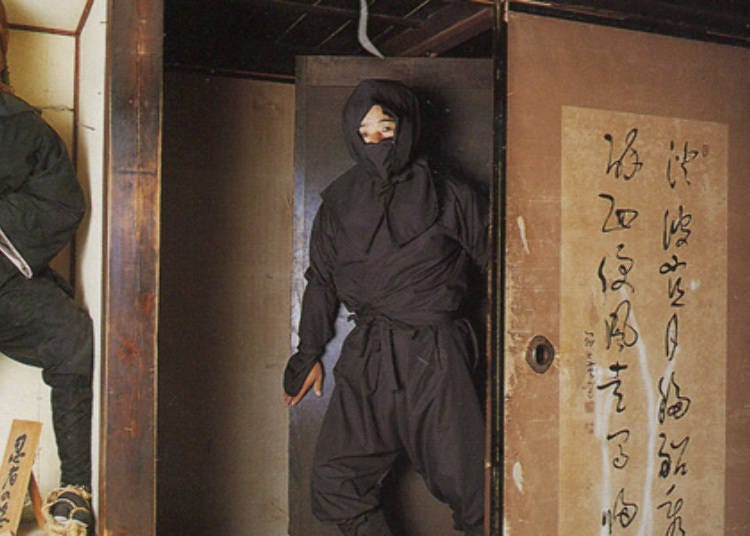
During the Warring States period, the leading ninja families were Iga’s Hattori and Koka’s Mochizuki families. The Mochizuki house employed various mechanisms to protect the family against unforeseen attacks. In this three-story building, visitors can observe and experience these clever measures.
Experience karakuri everywhere!
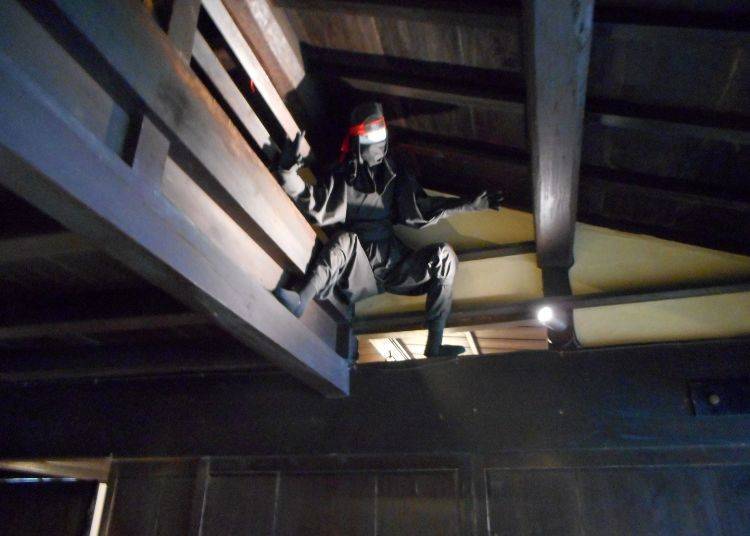
Visitors can freely wander throughout the house but will gain a fuller appreciation of the “karakuri” (mechanisms) by viewing the touch panel explanations (English and Chinese subtitles available) at the entrance to each section.
The house’s interior is slightly dim to confuse enemies and aid in escaping pursuers. Ninja also built their homes with many clever ways to hide themselves and defeat intruders. Let's explore the world of ninja karakuri.
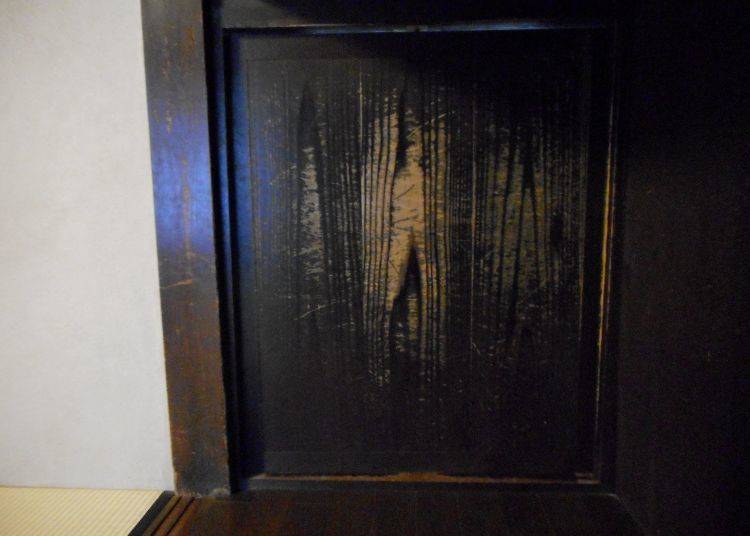
At first glance, it's an ordinary wooden wall...
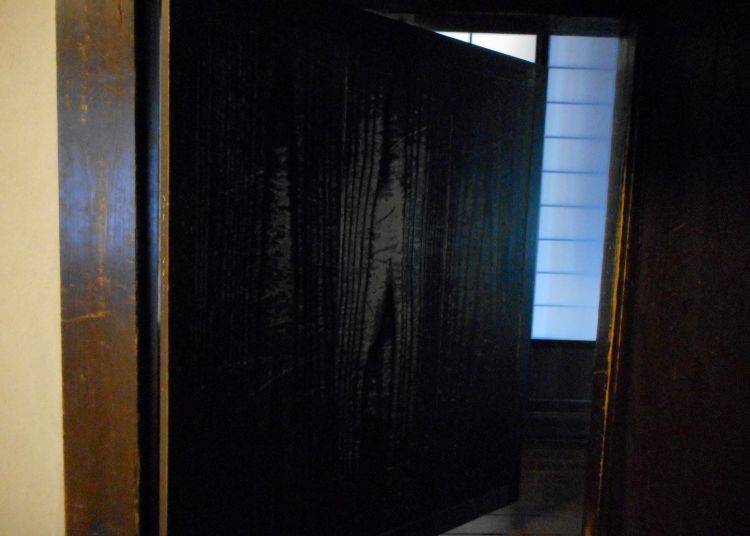
But with the application of a little force, it rotates, allowing the ninja to move to another room in a matter of seconds. The ninja seems to instantly disappear to an enemy, thus throwing off their pursuer like in a movie scene.

It looks like just a closet...
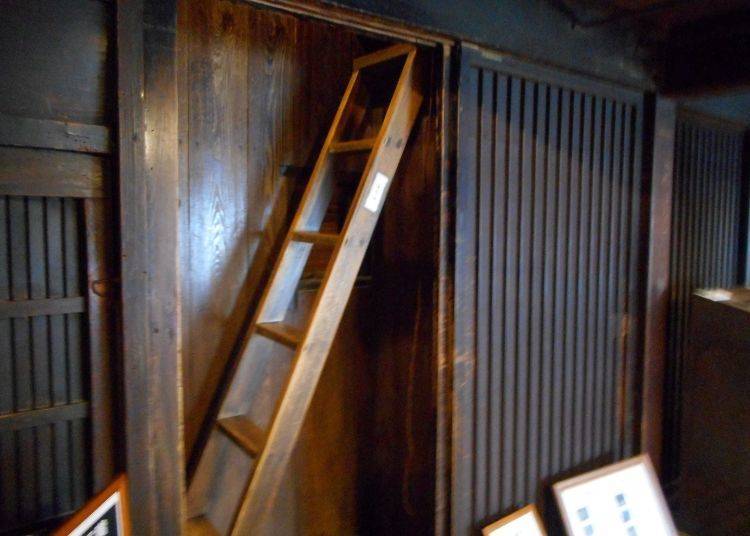
But when the door is opened, a hidden ladder is revealed. So if a ninja enters the closet and closes the door behind, they can climb to the second floor and pull the ladder up behind, unseen by a searching enemy. Then, even if the pursuer opens the door, they’ll find only an ordinary closet. In the meantime, the ninja can quickly escape outside.
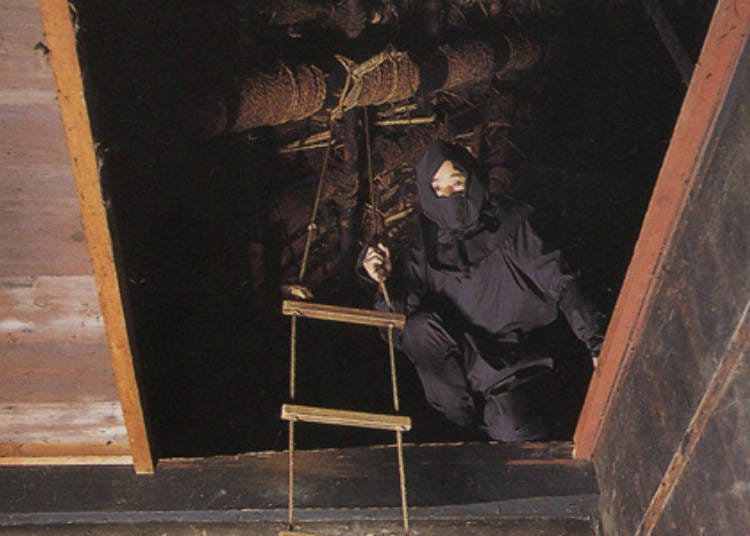
Rather than using the stairs, a rope ladder allows direct descent from the third floor to the first and quick escape.
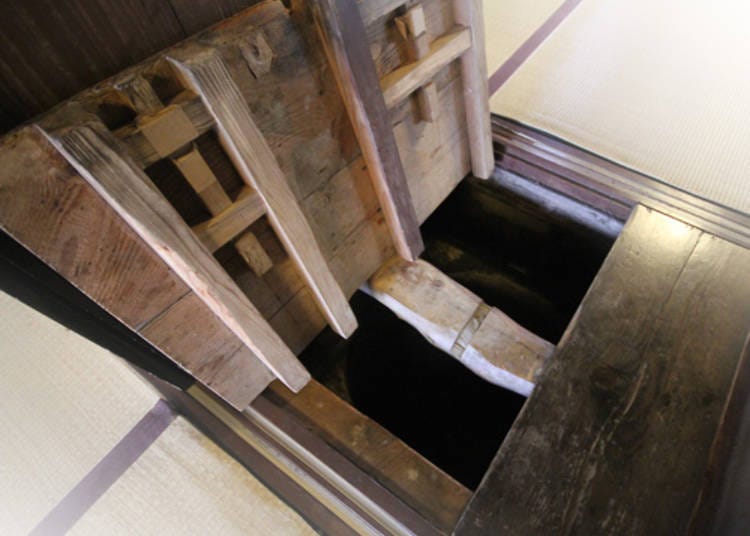
Lifting a tatami mat reveals a 3-meter deep pit. This dark room was intended to trap the enemy who couldn’t get out easily. However, the pit also functioned as a passageway under the entire residence and an alternative means of escape for the ninja.
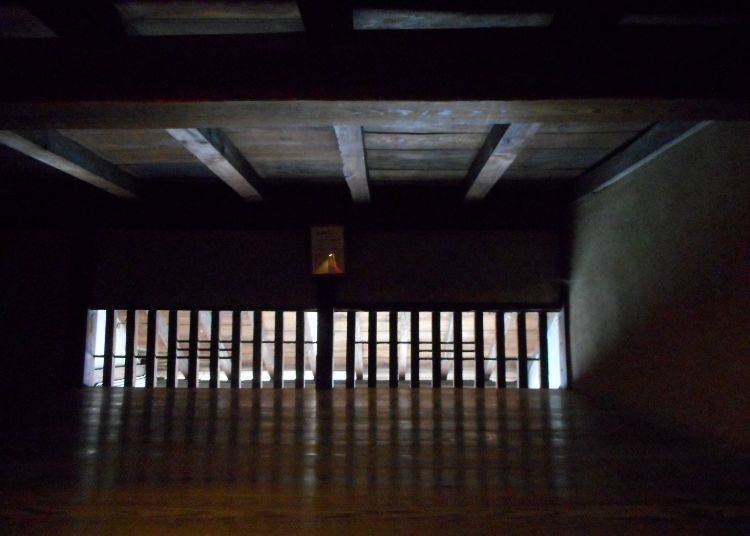
The ceiling on the second floor is quite low, so be careful not to hit your head. Only about 1 to 1.5 meters high, the low ceiling was designed to make it difficult for a foe to swing a sword. Conversely, ninjas used shorter swords to their advantage in these rooms.
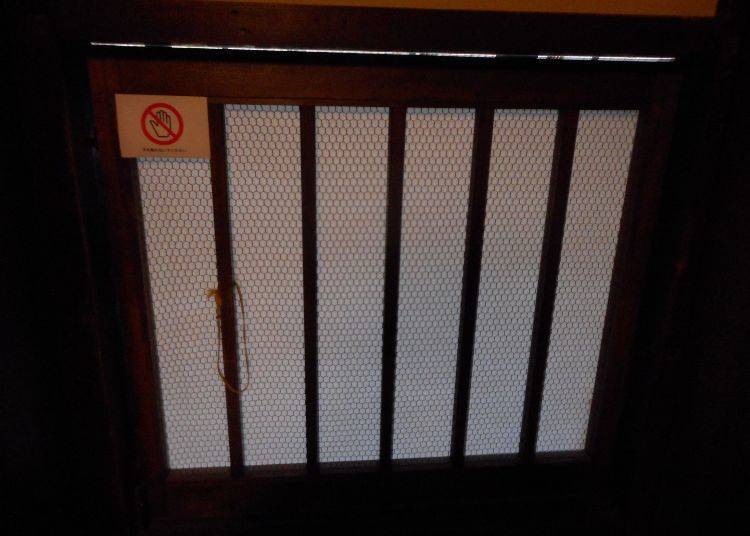
The window paper screen appears to be permanently closed, but if you slide a piece of paper between the frame and the wall...
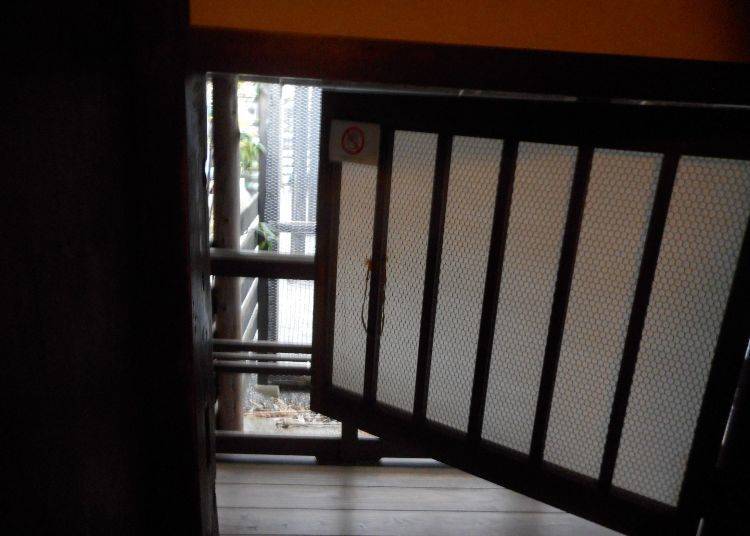
It opens easily. Escaping through the window allowed a ninja to pull off yet another kind of disappearing act.
After all that escaping, I need a break... So, what is ninja tea?
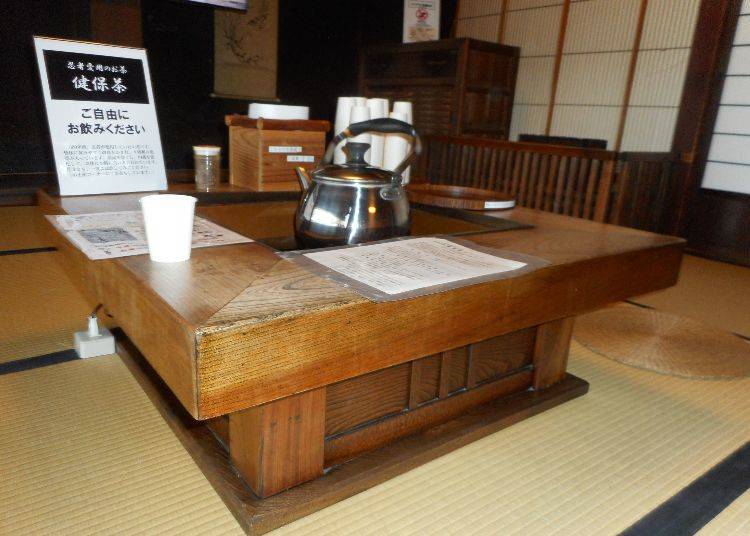
The Mochizuki family was also known for their skill at producing medicine and gunpowder. Books handed down through the Koka school report that ninjas were accustomed to drinking tea mixed with various herbs.
Brewed using the ancient recipe, free herbal kenpocha tea is available at the Koka house. Visitors can get a glimpse into the real world of ninja by watching videos about their history (English and Chinese subtitles available) while enjoying a cup of tea.
The ninja history room

The Koka House also has cases of shuriken (“throwing stars”), shikomizue (canes that conceal swords), makibushi (ground spikes scattered to injure pursuers), and other weapons. There are also digging tools, throwing knives, and scrolls of ninja secrets on display, granting insight into the true ninja way of life – shadow operations.
Dress up as a ninja and use shuriken
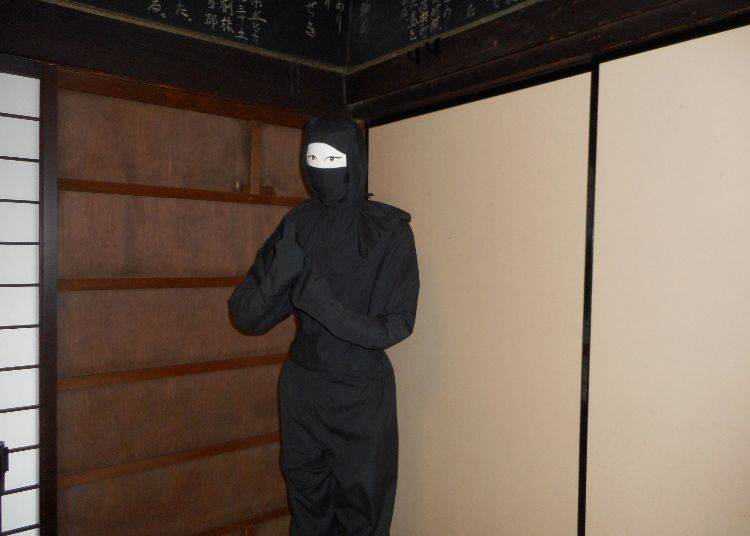
Visitors also have the opportunity to wear a ninja costume (800 yen) to take photos within a real ninja house setting, and even take a stealthy walk through the house. Two colors are available – black or red – and the wide range of available sizes will fit small children to people two meters tall.
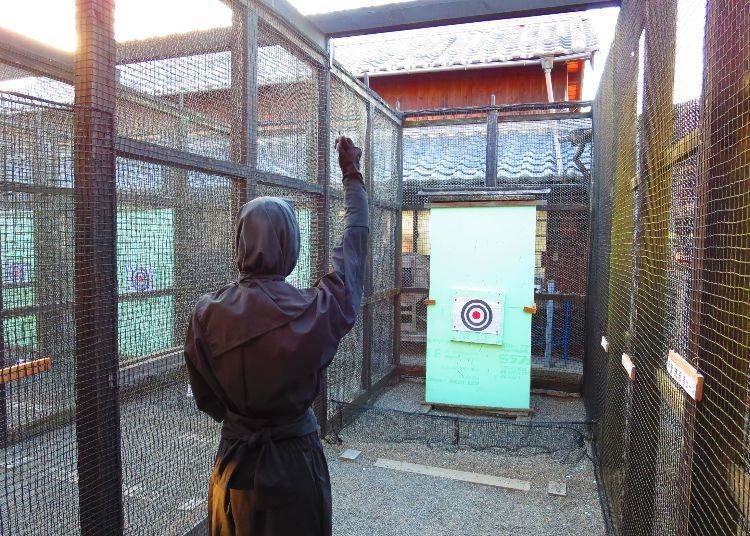
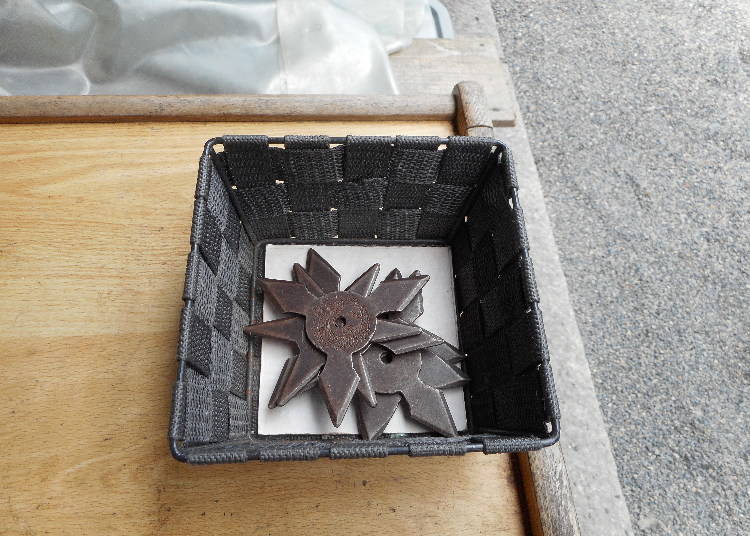
The first ninja weapon that comes to many people’s minds is the shuriken. Here, you can actually throw a shuriken. You’ll be given tips on throwing, and it’s quite a pleasure to hit the target. The cost is 300 yen for 8 pieces, and children are welcome to participate.
For 1,000 yen for the “Ninja Course” allows guests to wear a ninja costume, try shuriken throwing, and receive a souvenir rubber shuriken. The 1,300 yen “Dainin Course” includes the same activities as the Ninja Course but upgrades the souvenir to an iron shuriken (Price as of January 1, 2020).
5 Recommended Souvenirs at Koka Ninja House
After the intrigue of the ninja house itself, there’s more fun to be had when choosing souvenirs. The shop has an abundant supply of ninja-themed goods, including Koka House exclusives. Here are some recommended items:
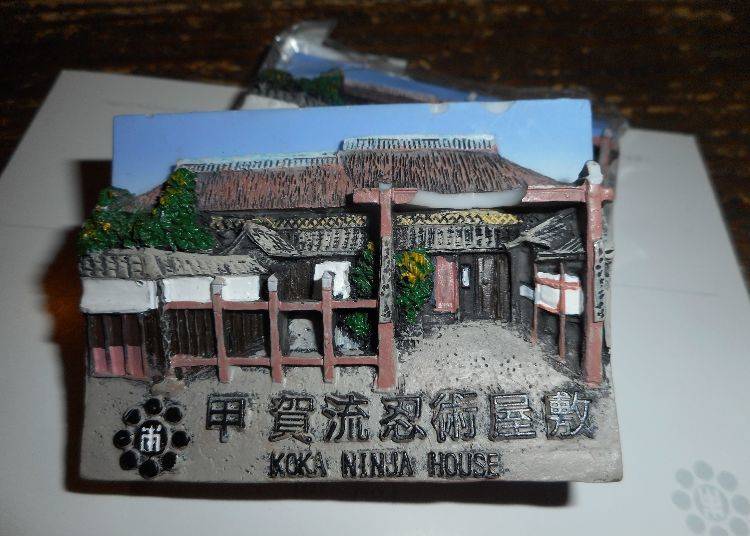
Koka Ninja House Magnet, depicting the house (450 yen).
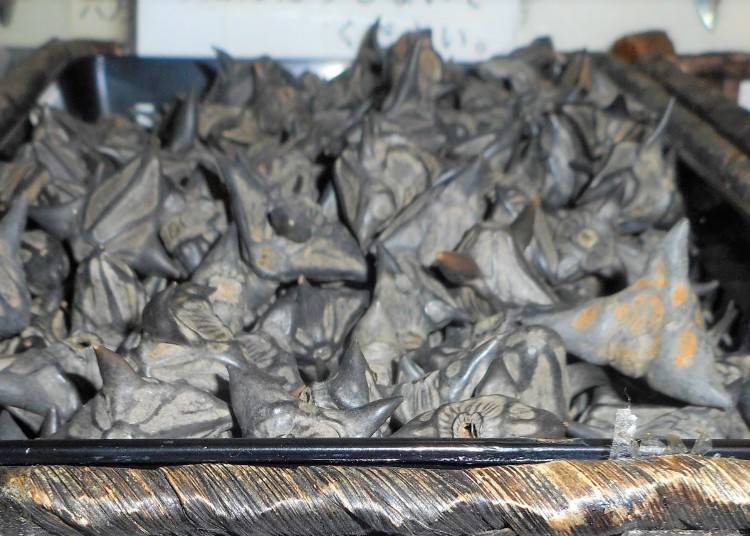
Makibushi (2 pieces, 100 yen). No matter how they’re dispersed, the pointed tips always point upward.
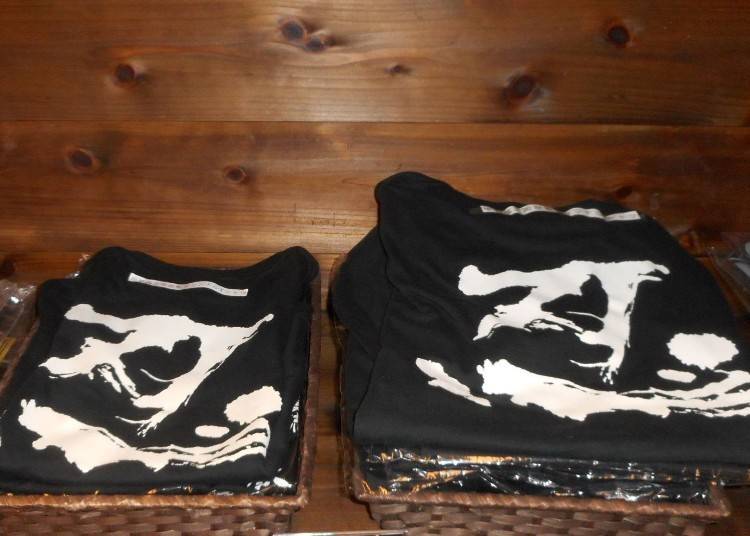
“Ninja house original T-shirt” with a large “shinobi” (ninja) character printed in the center (1,700 yen).
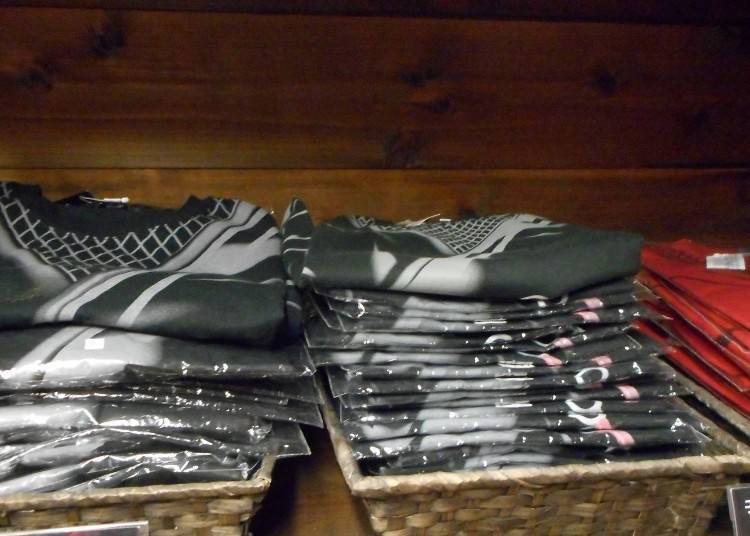
“Ninja T-shirt” with a ninja costume printed on the front (adult sizes, 2,000 yen; 1,600 yen for children).

Other Koka Ninja Locations
There are other ninja sites throughout Koka City, so you can journey even further into your study of ninja.
Koka no Sato Ninjutsumura (Koka Ninja Village) located in the Koka-cho Oki neighborhood, features a karakuri ninja house and a ninjutsu museum, where visitors can practice ninjutsu (ninja training and tactics) utilizing the area’s natural mountain terrain.
The Koka Historical Folk Museum in Koka-cho Aburahi has many ninja artifacts including swords, ladders, makibushi, and shuriken on display.
Ninja used their knowledge and skills to play an important role in Japanese history. Their ninjutsu, which may have seemed like magic, was actually carefully calculated and could only be performed with proper training. Koka Ninja House is full of a certain charm that exists because of its authenticity, and it’s the perfect place to gain a deeper understanding of the ninja who shaped Japan’s history from the shadows.
-
Koka Ninja House甲賀流忍術屋敷
- Address 2331 Konancho Ryuboshi, Koka, Shiga 520-3311
-
Nearest Station
Access: Take the JR Kusatsu line from JR Kusatsu Station, get off at Konan Station, and walk 20 minutes
- Phone Number 0748-86-2179
Hours: 9:00 - 17:00 (last entry 16:30); closed December 27 - January 2
Admission: Adults (junior high school students and older) 600 yen, children (3 years old and older) 400 yen
Text by: West Plan
Kiko Matsuda, Keiko Kimura, Risa Tsushi, and a team of female writers familiar with Kansai. We love eating, drinking and traveling! We share fun information based on our experiences.
- Area
- Category
*Prices and options mentioned are subject to change.
*Unless stated otherwise, all prices include tax.
Popular Tours & Activitiess
Recommended places for you
-

Tenryu-ji Temple
Temples
Arashiyama, Uzumasa
-

Kanzenkoshitsuyakinikutabehodai Gyugyu Paradise Sannomiya
Yakiniku
Kobe, Sannomiya, Kitano
-

Jukuseiniku-to Namamottsuarera Nikubaru Italian Nikutaria Sannomiya
Izakaya
Kobe, Sannomiya, Kitano
-

Kambei Sannomiyahonten
Yakiniku
Kobe, Sannomiya, Kitano
-

ISHIDAYA Hanare
Yakiniku
Kobe, Sannomiya, Kitano
-
Goods

Yoshida Gennojo-Roho Kyoto Buddhist Altars
Gift Shops
Nijo Castle, Kyoto Imperial Palace
-
Ad

Recharge and Relax with a Healing Getaway at Kamenoi Hotel Toba
-

Everything You Need to Know About teamLab Biovortex Kyoto (2025 Insider Guide)
by: Wemmy Chau
-

Celebrate a Dreamy Barbapapa Christmas at JR Osaka Station's Twilight
by: Guest Contributor
-

Kyoto's Hidden Treasures Open This Winter! Enjoy Exclusive Access to 15 Rare Cultural Sites (Jan-Mar 2026)
by: Guest Contributor
-

November Events in Kansai: Fun Festivals, Food, and Things to Do in Kyoto & Osaka
-
Ad

Café Bahnhof in Osaka: The home-roasted coffee that captivated G20 leaders!
Inspiration for Accommodations
-

Spacious Family Hotel in Namba: 20 Comfortable Stays for Family Fun
-

Charming Hotels to Enjoy the Spectacular Views of Arashiyama's Autumn Leaves from Your Room
-

Experience Stunning Views of Osaka Castle from Private Spaces: Top Hotels Near Osaka Castle
-

Recommended by Visitors! Arashiyama's Best-Rated Hotels
-

Family-Friendly Universal Studios Japan Hotel with Excellent Access
-

Enjoy a Comfortable Stay in Osaka! 10 Hotels with Convenient Airport Shuttle Services
-

Top 10 Recommended Hotels Near Namba Station with Great Access
-

Enjoy Night Views from Your Room! Recommended Hotels in Namba Area
-

Osaka's Central Public Hall: Inside the Incredible Iconic Tourist Attraction
-

Enjoy Kobe's Historic Charm: A 2-Hour Itinerary for Kitano-cho Ijinkan
by: Guest Contributor
-

Popular Food at Universal Studios Japan
by: WESTPLAN
-

Why Osaka Tennoji Zoo is So Popular with Foreign Tourists (Guide & Highlights)
-

Highlights of Umeda Sky Building: Get the Perfect Views of Osaka!
-

5 Amazing Kyoto Festivals You’ll Want to Experience During Your Next Trip
- #best gourmet Osaka
- #things to do Osaka
- #what to do in kyoto
- #what to bring to japan
- #best gourmet Kyoto
- #new years in Osaka
- #what to buy in nanba
- #Visiting Osaka
- #onsen tattoo friendly arima
- #daiso
- #Visiting Kyoto
- #best japanese soft drinks
- #japanese fashion culture
- #japanese convenience store snacks
- #japanese nail trends













